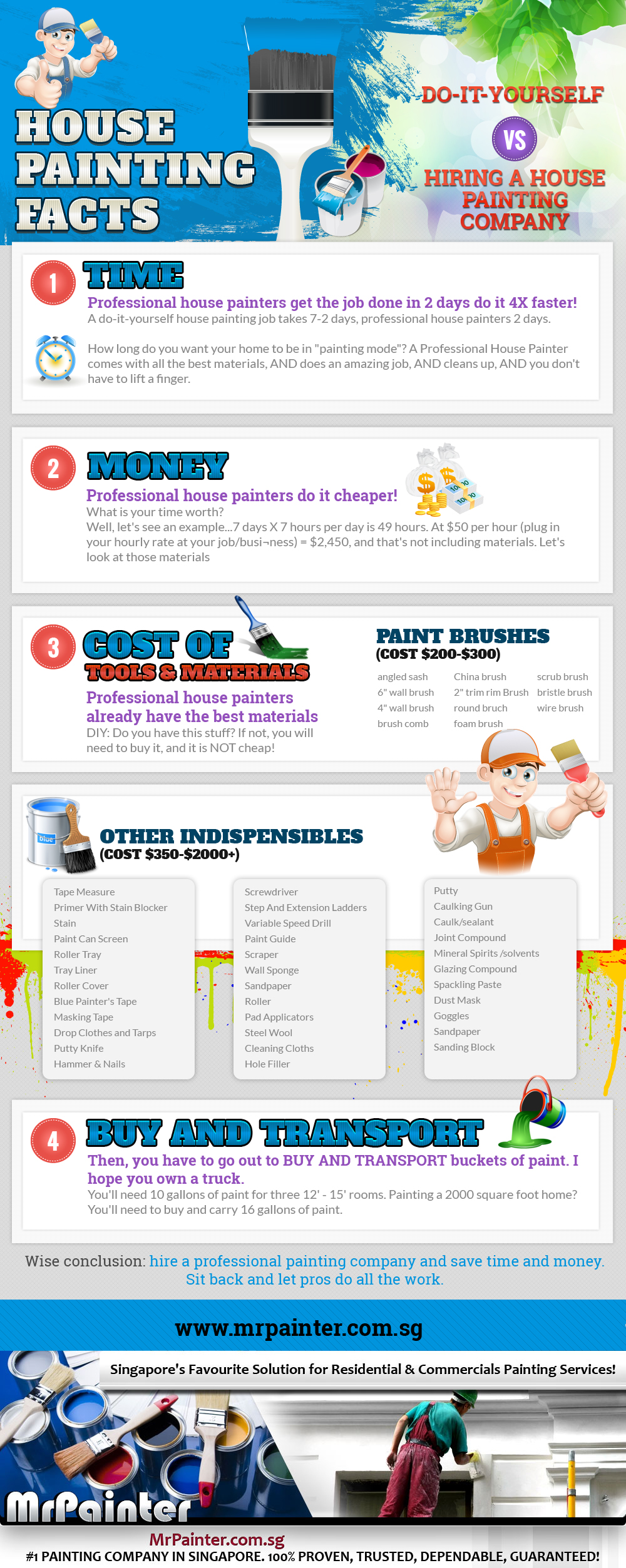Crucial Seasonal Aspects Of Commercial Outside Paint: What You Need To Comprehend
Crucial Seasonal Aspects Of Commercial Outside Paint: What You Need To Comprehend
Blog Article
Write-Up Created By-Korsholm Browne
When you're preparing an industrial exterior paint task, seasonal elements can make or break your results. You'll intend to think about how temperature and moisture influence paint application and drying out times. Picking the best period can guarantee your paint sticks appropriately and lasts much longer. Yet which seasons are truly the best for this kind of work? Allow's discover the key elements that can impact your job's success.
The Influence of Temperature Level on Paint Application
When you're planning an industrial exterior paint job, the temperature can significantly impact how well the paint sticks and dries.
Preferably, you intend to paint when temperature levels vary between 50 ° F and 85 ° F. If it's too cold, the paint may not treat effectively, causing problems like peeling off or cracking.
On the other hand, if it's also hot, the paint can dry out too quickly, avoiding proper bond and leading to an unequal surface.
can you paint the ceiling and walls the same color must additionally think about the time of day; morning or late afternoon provides cooler temperatures, which can be much more favorable.
Constantly check the maker's suggestions for the certain paint you're making use of, as they often provide guidance on the excellent temperature range for optimum outcomes.
Humidity and Its Result on Drying Times
Temperature isn't the only ecological factor that affects your commercial exterior paint task; moisture plays a substantial function too. High humidity degrees can decrease drying out times considerably, affecting the overall quality of your paint job.
When the air is saturated with wetness, the paint takes longer to cure, which can bring about issues like bad attachment and a higher danger of mildew development. If primer shelf life on a particularly damp day, be prepared for extended wait times between coats.
It's critical to monitor regional weather and plan appropriately. Ideally, aim for moisture degrees between 40% and 70% for ideal drying.
Keeping these consider mind guarantees your project stays on track and supplies an enduring finish.
Best Seasons for Commercial Exterior Paint Projects
What's the most effective season for your business external painting tasks?
Spring and early autumn are typically your best bets. Throughout these periods, temperatures are moderate, and humidity levels are commonly lower, producing perfect conditions for paint application and drying out.
Avoid summertime's intense heat, which can trigger paint to completely dry also rapidly, resulting in inadequate bond and finish. In a similar way, winter season's cold temperatures can prevent correct drying out and healing, taking the chance of the durability of your paint job.
Go for days with temperature levels between 50 ° F and 85 ° F for optimal outcomes. Bear in mind to examine the local weather forecast for rain, as wet conditions can spoil your task.
Preparation around these elements guarantees your painting project runs efficiently and lasts much longer.
Final thought
In conclusion, planning your business outside paint projects around seasonal factors to consider can make a significant difference in the outcome. By organizing job during the ideal temperature levels and moisture degrees, you'll make certain better attachment and drying out times. Remember to watch on local weather forecasts and select the correct time of year-- spring and early loss are your best choices. Taking these steps will certainly help you achieve a durable and professional surface that lasts.
